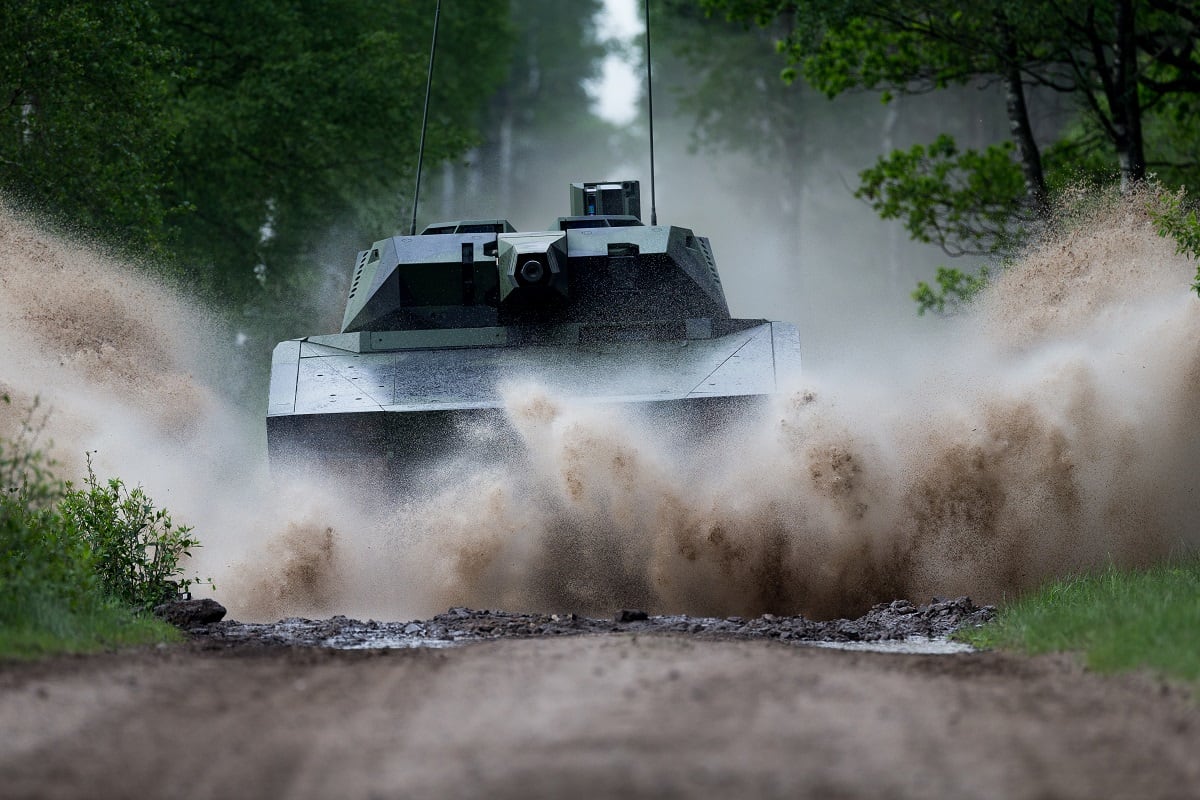WASHINGTON — The Army has disqualified Raytheon and Rheinmetall’s bid for the Optionally Manned Fighting Vehicle prototype competition, Defense News has learned.
The OMFV is meant to replace the service’s Bradley Infantry Fighting Vehicle. The Army’s plan was to take the bid samples submitted this week, evaluate them over a period of time and then choose two companies to deliver 14 prototypes each and then would pick a single winner after further evaluation. The Army’s goal was to begin replacing Bradleys in 2026.
The Army would not comment on the disqualification and said in a statement sent to Defense News that the solicitation for the OMFV prototyping effort closed on Oct. 1 and “we are now in the competition sensitive Source Selection Evaluation process.”
The service noted in the statement that it “remains committed to rapidly execute the Optionally Manned Fighting Vehicle program,” its number two modernization priority.
But multiple sources have confirmed that the bid — Rheinmetall’s Lynx 41 Infantry Fighting Vehicle — was disqualified and the bid sample, the only one in existence, remains in Germany at the company’s facility in Unterluss.
RELATED

The Army required the competitors to deliver a single bid sample — a full-up working vehicle — to Aberdeen Proving Ground, Maryland, by Oct. 1.
The Lynx has left the Rheinmetall compound several times before, notably to travel to be unveiled in Paris at Eurosatory in June 2018 and again at the Association of the U.S. Army’s annual conference last fall. Raytheon and the Rheinmetall announced at AUSA that they would partner on the OMFV program and submit Lynx as its offering.
The disqualification of the team means that General Dynamics Land Systems’ offering is the only vehicle remaining in the competition. According to sources, no other company submitted. Hanwha, a South Korean defense company, was interested in competing but chose not to participate, multiple sources claim.
Industry sources have said that several companies who wanted to compete or submitted bids had asked for extensions, roughly 90 days in the case of Rheinmetall, to meet requirements.
According to multiple sources, potential bidders expressed concern to the service that meeting the requirements, the timeline and a combination of the two wasn’t possible.
What snarled Rheinmetall, for instance, according to sources, was the timeline it needed to get approvals from the local municipal government to transport the vehicle by tractor trailer or rail and then via air.
Sources said that the company had requested a four-week extension to deliver the vehicle to Aberdeen and also offered to hand over the vehicle to the Army under lock and bond in Germany by the Oct. 1 deadline and both were denied.
But a larger issue, multiple sources conveyed, was the clear differences between what the Army acquisition community and what Army Futures Command wanted to do. Sources confirmed that the acquisition side of the house was willing to agree to extensions, for instance, but AFC, who is in charge of rapid requirements development and prototyping efforts ahead of programs of record, insisted the Army must adhere to the schedule.
Industry also expressed concern to the Army over the roughly 100 mandatory requirements, with just six tradeable ones, expected to be met over 15 months using non-developmental vehicles.
Brig. Gen. Ross Coffman, who is in charge of Next-Generation Combat Vehicle (NGCV) modernization efforts, said at the Defense News Conference in September that he was confident the requirements set for OMFV are appropriate and had no plans to change them.
Presently, the OMFV competition is on hold due to a congressionally mandated continuing resolution that prevents the effort from kicking off. The Army had planned to begin the $378 million program in the first quarter after taking receipt of the bid samples at the start of the new fiscal year.
As the Army enters its competition to build prototypes to replace the Bradley, Australia is running a similar effort and recently downselected to two competitors: Rheinmetall’s Lynx and an offering from Hanwha. GDLS was competing but did not make the final cut. Australia laid out just five mandatory requirements for its competition.
GDLS has not yet detailed its offering for OMFV but said it was “purpose built” for the U.S. Army.
Jen Judson is an award-winning journalist covering land warfare for Defense News. She has also worked for Politico and Inside Defense. She holds a Master of Science degree in journalism from Boston University and a Bachelor of Arts degree from Kenyon College.








